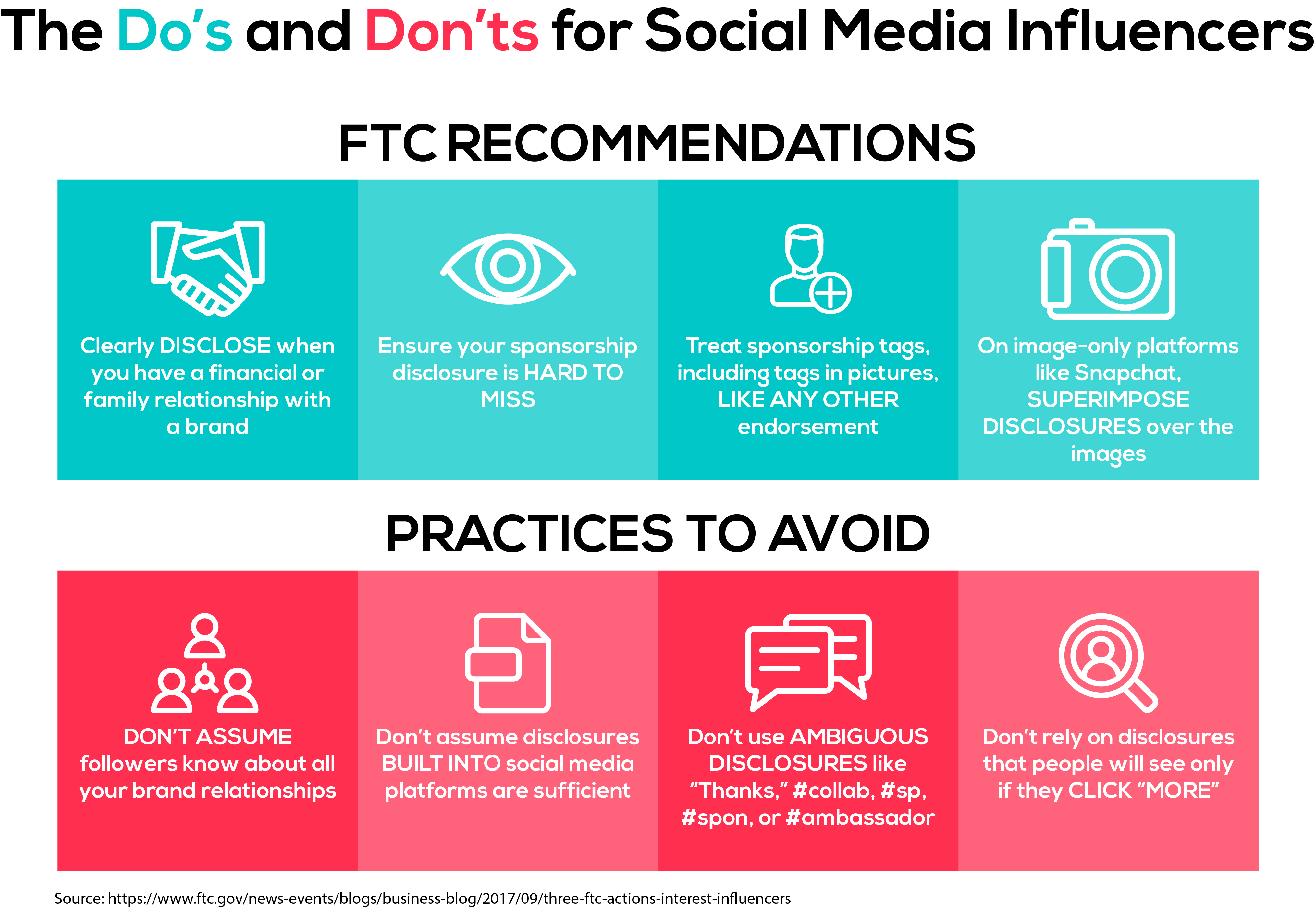Feeling overwhelmed by the legalities of disclosing brand partnerships to your audience? The Federal Trade Commission (FTC), entrusted to protect consumers and business competition, released an updated, user-friendly guide late last year on Disclosures for Social Media Influencers. Here is everything you need to know.
When to Disclose
You must disclose when you have any financial, employment, personal, or family relationship with a brand. In general, if you got anything of value to mention a brand, you have to disclose your relationship with that brand to your audience. This includes receiving free products, even if they didn’t explicitly ask you to mention the product. Ultimately, it’s important that you don’t assume your followers know about all of your partnerships when promoting a brand. If you are simply telling your audience about a product you bought and like, and have no brand relationship whatsoever, you DO NOT have to disclose the brand.
How to Disclose
First and foremost, it’s important to make sure that people see and understand your brand partnership disclosure. Disclosures should always be with the endorsement message. Here’s how you disclose in the following formats:
Picture. If your endorsement is on a picture platform (think Snapchat or Instagram Stories), you must superimpose the disclosure over the photo/video to ensure your followers have enough time to read it.
Video. If making an endorsement in a video, the disclosure should be made in audio and video to ensure all viewers will notice it, whether they are watching without sound, or are unable to see the superimposed disclosure.
Live Video. If you are making an endorsement in a live stream, the disclosure should be repeated periodically, so people joining or leaving the live stream at different times will be able to notice it.
NOTE:
- Posting endorsements in your bio, on your profile page, or at the end of posts or videos IS NOT good enough.
- Make sure you do not mix your disclosure into a group of hashtags. Viewers may miss it.

Use Simple and Clear Language
The following are examples of simple and clear language from the FTC’s Disclosures for Social Media Influencers:
- Simple explanations like “Thanks to Acme brand for the free product” are often enough if placed in a way that is hard to miss.
- So are terms like “advertisement,” “ad,” and “sponsored.”
- On a space-limited platform like Twitter, the terms “AcmePartner” or “Acme Ambassador” (where Acme is the brand name) are also options.
-
- It’s fine (but not necessary) to include a hashtag with the disclosure, such as #ad or #sponsored.
- Don’t use vague or confusing terms like “sp,” “spon,” or “collab,” or stand-alone terms like “thanks” or “ambassador,” and stay away from other abbreviations and shorthand when possible.
- The disclosure should be in the same language as the endorsement itself.
- Don’t assume that a platform’s disclosure tool is good enough, but consider using it in addition to your own, good disclosure.

Be Honest
Not only are following these guidelines best practices of the law, but they enhance authenticity and trustworthiness with your audience. Don’t talk about your experience with a product you haven’t tried. If you are being paid to talk about a product, but think it’s whatever, don’t give it a glowing review. Being transparent about being paid, and how you feel about the products/services you promote, will always be rewarded by the most loyal audiences.
